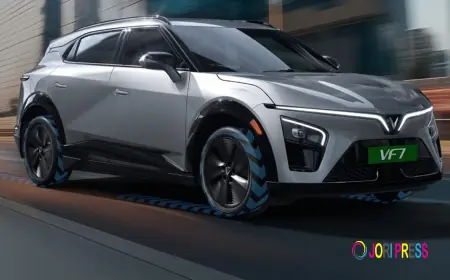How to Get Massive Traffic from Pinterest Without Paid Ads
Pinterest is one of the most powerful and underrated platforms for driving massive traffic to websites, blogs, online stores, and landing pages. While many brands invest in paid ads, the truth is, you don’t need to spend a single dollar to get results. Thousands of creators, marketers, and bloggers get massive traffic from Pinterest every week purely through smart organic strategies.
If you want to harness Pinterest’s full potential without touching your wallet, this article will show you how. By optimizing your content, understanding Pinterest’s algorithm, and staying consistent, you can attract a steady stream of free, targeted visitors to your site.
Why Pinterest Works So Well for Free Traffic
Massive traffic from Pinterest is not just a social platform—it’s a visual search engine. That means your content doesn’t vanish after a few hours like it might on Instagram or Twitter. Instead, pins can resurface weeks, months, or even years later through search results, Smart Feed, and related pins.
Unlike other platforms that rely on follower counts and fast-paced content cycles, Pinterest allows your pins to gain momentum over time. If your content is evergreen and helpful, it can consistently generate massive traffic from Pinterest for free.
Step 1: Set Up a Business Account
To access analytics and optimize your content for growth, start by converting to a Pinterest Business Account. It’s completely free and unlocks key tools like:
-
Pinterest Analytics
-
Rich Pins
-
Audience Insights
-
Ad-Free Performance Data
Once your account is set up, claim your website and connect your profile with a relevant, keyword-rich description. This helps boost your authority and improves how your pins appear in search results.
Step 2: Research and Use the Right Keywords
Since Pinterest operates like a search engine, keywords are your best friend. They help users find your pins when searching for topics or ideas.
✅ Where to use keywords:
-
Pin titles
-
Pin descriptions
-
Board names and descriptions
-
Profile bio
-
Image file names (before uploading)
Use Pinterest’s search bar to discover what users are typing. For example, start with “blog traffic tips,” and Pinterest will suggest related searches like “how to grow blog traffic,” “free blog promotion,” or “Pinterest for beginners.” Add these into your content naturally.
Step 3: Create Click-Worthy Pin Designs
Pinterest is a visual platform, so eye-catching pins are essential. You only have a few seconds to grab attention mid-scroll.
✅ Tips for high-performing pins:
-
Use a vertical format (1000x1500 pixels).
-
Add bold, clear text overlays with keywords.
-
Use high-contrast colors and brand-aligned fonts.
-
Include your website URL or logo subtly for branding.
You don’t need to be a graphic designer. Tools like Canva offer free templates you can customize in minutes.
The more your pins stand out, the more saves and clicks you’ll get—leading to massive traffic from Pinterest without spending a dime.
Step 4: Publish Fresh Pins Regularly
Pinterest favors fresh content—which means new images, titles, or descriptions, even if they link to existing content.
✅ Recommended posting frequency:
-
3–10 fresh pins per day
-
2–3 Idea Pins per week
-
1 new blog post or product page to pin weekly (if possible)
Even if you’re linking to the same blog post, try creating 3–5 different pin designs over time. This gives Pinterest multiple entry points to rank your content.
Use scheduling tools like Tailwind or Pinterest’s native scheduler to stay consistent without spending hours daily.
Step 5: Organize Keyword-Rich Boards
Pinterest uses your boards to understand your niche and help distribute your pins more accurately.
✅ How to optimize your boards:
-
Create boards based on your audience’s interests or content categories.
-
Use specific titles (e.g., “Healthy Meal Prep for Busy Moms” instead of “Food”).
-
Write keyword-rich board descriptions (about 1–2 sentences).
-
Add 15–20 relevant pins to each board (include your own and others’ content).
Well-organized boards help Pinterest understand what your pins are about, leading to better ranking and more organic traffic over time.
Step 6: Focus on Idea Pins for Visibility
Idea Pins (Pinterest’s answer to Stories) are now heavily prioritized by the algorithm. They don’t include outbound links, but they’re essential for boosting profile visibility and gaining followers.
✅ Why they matter:
-
They appear in more feeds and often get higher reach.
-
They encourage interaction and content engagement.
-
They build trust and authority in your niche.
Once people discover your Idea Pins, they’re more likely to check your profile and click through to your linked pins, generating massive traffic from Pinterest indirectly.
Step 7: Monitor Analytics and Double Down on What Works
Pinterest Analytics lets you track which pins drive the most impressions, clicks, and saves. Use this data to fine-tune your strategy.
✅ Look for:
-
Pins with high click-through rates (CTR)
-
Boards with the most engaged followers
-
Top-performing topics and keywords
Once you identify a winning formula, replicate it. Create new pins for your best content and expand your top-performing topics into series or collections.
Step 8: Join Group Boards and Pinterest Communities
While not as powerful as they once were, group boards still offer a way to expand your reach—especially if they’re niche-specific and active.
✅ How to find them:
-
Use search terms like “Pinterest Group Boards for Bloggers” or “DIY group boards.”
-
Contact board owners and request an invite.
-
Follow the rules and contribute valuable pins regularly.
Group boards increase the exposure of your pins, which can result in more saves, shares, and eventual clicks—again, leading to massive traffic from Pinterest organically.
Final Thoughts
Pinterest is one of the few platforms where free content can still go viral and drive long-term, sustainable traffic. You don’t need a massive budget—just smart pin design, consistent posting, keyword optimization, and a focus on your audience’s needs.
If you follow the steps above and stay patient, you'll see real results—without spending a penny on ads.
What's Your Reaction?
 Like
0
Like
0
 Dislike
0
Dislike
0
 Love
0
Love
0
 Funny
0
Funny
0
 Angry
0
Angry
0
 Sad
0
Sad
0
 Wow
0
Wow
0


















































